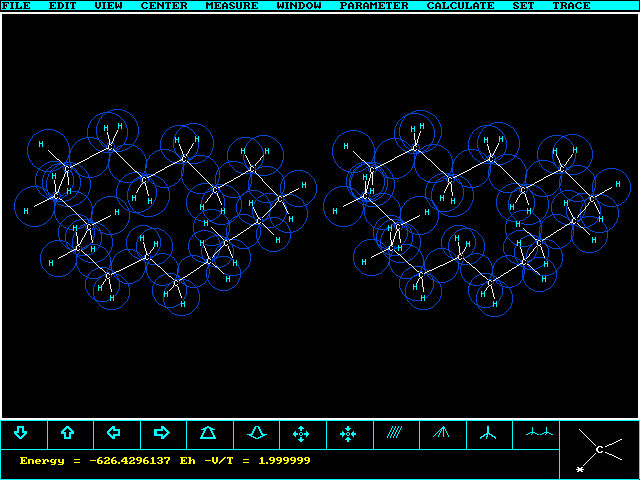cyclo-C16H32

Comparison Kimball//PC-Gamess; stationary structure of Kimball used in 1st Gamess run
Kimball PC-Gamess
G21205*) 6-31G//kimb 6-31G(d) opt
ONE ELECTRON ENERGY = -3272.4556 -3247.3318583115 -3194.5033494982
TWO ELECTRON ENERGY = 1435.7434 1413.0306897846 1386.5703331440
NUCLEAR REPULSION ENERGY = 1210.2826 1210.2826664024 1183.4092698631
---------- ------------------ ------------------
TOTAL ENERGY = -626.42961 -624.0185021244 -624.5237464911
ELECTRON-ELECTRON POTENTIAL ENERGY = 1435.7434 1413.0306897846 1386.5703331440
NUCLEUS-ELECTRON POTENTIAL ENERGY = -3898.8857 -3872.5549891609 -3818.7889748164
NUCLEUS-NUCLEUS POTENTIAL ENERGY = 1210.2826 1210.2826664024 1183.4092698631
---------- ------------------ ------------------
TOTAL POTENTIAL ENERGY = -1252.8597 -1249.2416329739 -1248.8093718093
TOTAL KINETIC ENERGY = 626.43007 625.2231308495 624.2856253182
VIRIAL RATIO (V/T) = 1.9999993 1.9980732819 2.0003814299
*) Comment: The parameter set G21205 for Kimball has been optimized using small molecules
computed with G2/G3 combo of Gaussian98. It has correlation energy corrections, that the
two Gamess computations don't have.
